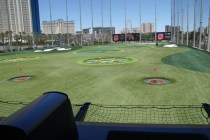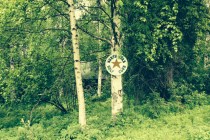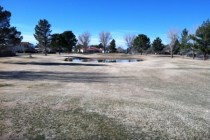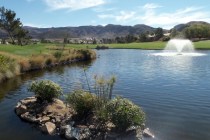Understanding handicap system, course rating is rocket science
This month I pondered writing about something different. Perhaps a discourse on nuclear fusion and the effect on the environment. Let’s explore the quantum theory of time travel. A study of evidence of extraterrestrials and identity fraud.
Then I met Eric Yaillen.
“Eric, this is rocket science,” I state. Eric smiles and answers that it really isn’t. Eric is the executive director of the Southern Nevada Golf Association. His mission is to represent, promote and serve the best interests of golf in Nevada and is the official representative of the United States Golf Association in Southern Nevada. The topics of our conversation have been the USGA handicap system, how to establish a course rating and what the heck a slope measures.
HANDICAPPED UNDERSTANDING
The premise of the USGA Handicap system is that every player will try to make his best score on every hole. These scores are then posted for what is called Peer Review. We all know what that means. In addition, the handicap system is to make golf more enjoyable by letting players of different abilities compete on an even field. After at least five adjusted gross scores, a GHIN handicap index can be issued.
The GHIN, or Golf Handicap and Information System, was established by the USGA in 1981 and has grown into the largest handicap service in the world. It’s used in more than 72 countries and at more than 12,500 golf courses. GHIN is offered to state and regional golf associations and to member clubs. Benefits are the ability to transfer scores from course to course, Internet score posting and accurate, up-to-date course rating information.
A handicap index measures a player’s potential ability on a course of standard playing difficulty with a slope of 113. Also, it measures the player’s ability to the scoring ability of a scratch golfer on a course of standard playing difficulty with a slope of 113. The handicap index is calculated by the score you shoot minus the course rating, times the average slope of 113, divided by the slope of the course you played.
A course handicap is the number of strokes a player receives from a particular set of tees at the course being played. For a golfer to get a course handicap, there are some calculations to do. According to the USGA website, each set of rated tees will have a different course handicap table for men and women based on its slope rating. A player’s course handicap is determined by multiplying a handicap index by the slope rating of the course and then dividing by 113. And so on and so forth. I think there are conversion apps for all of this. Whew.
RATING CONUNDRUM
Ever wonder on a course’s score card how the course rating and slope are developed?
The USGA course rating system takes into account all the factors that affect the playing difficulty of a golf course. The rating is the evaluation of the playing difficulty of the course for scratch golfers under normal conditions.
It’s expressed as a number taken to one decimal point and is based on yardage and obstacles that affect play. It’s also the standard upon which the USGA handicap system is built. Interesting definitions: A scratch golfer can hit a drive 250 yards at sea level and a second shot of 220 yards. A bogey golfer can hit a drive 200 yards and a second shot of 170 yards.
Here’s the general process: A team of three evaluators trained by the USGA conducts the rating while walking the course. The form used in this evaluation is called a Form 1. For use in this analysis, assume that the ratings are for the white tees.
1. Measure the distance from the tee box to the center of the green (par 3) or the landing areas (par 4 or 5).
2. Evaluate width of fairways.
3. Measure distances to out-of-bounds stakes.
4. Measure distances of bunkers and hazards to landing areas.
5. Determine height of rough and recoverability if the landing area is missed.
6. Measure topography. Are there slopes, mounds or uphill/downhill shots to the green?
7. Measure density and height of trees.
8. Measure desert areas.
9. Determine the difficulty of hitting greens, green size, approach shot length, green surface visibility and firmness. Also measure speed and contour of the green.
10. Determine altitude, of course.
And the kicker is …
11. Measure the psychological factor — the evaluation of the cumulative effect of all the other obstacles.
After the rating is complete, the three raters discuss each hole, come to a consensus and issue a rating. To me, it is rocket science.
For more information, check out the Southern Nevada Golf Association website, snga.com, for further details regarding all the great things happening over there. I’ll get to the slope explanation after my frontal lobotomy.
John Asay is a longtime golfer and local freelance writer. Contact him at jasay@reviewjournal.com.















